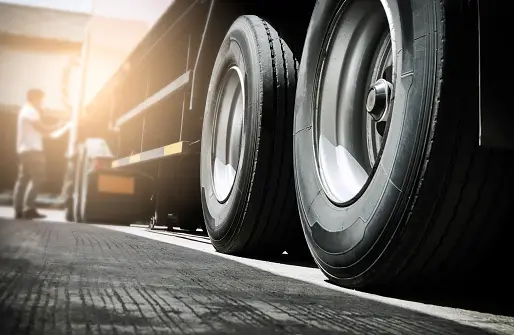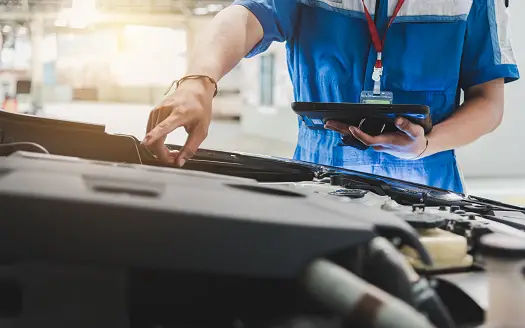May 17, 2023
Vehicle Maintenance to Consider
When it comes to vehicle maintenance, there are several aspects you should consider to ensure your vehicle operates smoothly and safely. Here are some important maintenance tasks to keep in mind:
- Regular oil changes: Engine oil lubricates the internal components of your engine and helps keep it running smoothly. Follow the manufacturer’s recommendations for oil change intervals and use the appropriate type and grade of oil.
- Tire maintenance: Check your tire pressure regularly and ensure it matches the recommended levels specified in your vehicle’s manual. Inspect tires for signs of wear, such as uneven tread or bulges, and rotate them as recommended to promote even wear.
- Brake system inspection: Regularly inspect your brake pads, rotors, and brake fluid levels. Replace brake pads that are worn down, and have any brake-related issues addressed promptly to ensure optimal braking performance.
- Fluid checks: Monitor the levels and condition of various fluids in your vehicle, including coolant, transmission fluid, power steering fluid, and windshield washer fluid. Top them up or have them replaced as needed.
- Battery maintenance: Inspect your vehicle’s battery regularly for signs of corrosion or damage. Clean the battery terminals if necessary and ensure a secure connection. If your battery is old or weak, consider replacing it to avoid unexpected breakdowns.
- Air filter replacement: A dirty air filter can restrict airflow to your engine, affecting performance and fuel efficiency. Regularly inspect and replace the air filter as recommended by the manufacturer.
- Regular inspections: Schedule periodic inspections of your vehicle by a qualified mechanic. They can identify potential issues before they become major problems and ensure your vehicle is in good working condition.
- Belt and hose checks: Inspect the condition of your vehicle’s belts and hoses regularly. Look for signs of cracking, fraying, or excessive wear. Replace any damaged belts or hoses promptly to prevent breakdowns or damage to other components.
- Wiper blade replacement: Replace your windshield wiper blades if they are worn out or leaving streaks on the windshield. Clear visibility is crucial for safe driving, especially during adverse weather conditions.
- Lights and signals: Regularly check that all your vehicle’s lights, including headlights, taillights, brake lights, and turn signals, are functioning properly. Replace any bulbs that have burned out.
Remember to consult your vehicle’s owner manual for specific maintenance recommendations from the manufacturer. Additionally, following a regular maintenance schedule and addressing any issues promptly can help extend the life of your vehicle and maintain its reliability.

What maintenance should be done on a vehicle?
Regular maintenance is essential for keeping your vehicle in optimal condition and preventing potential issues. Here is a comprehensive list of maintenance tasks to consider:
- Engine oil and filter change: Regularly change the engine oil and replace the oil filter according to the manufacturer’s recommended intervals.
- Tire care: Check tire pressure regularly and ensure it matches the recommended levels. Rotate tires at specified intervals, inspect for wear and damage, and replace them when necessary.
- Brake system maintenance: Inspect brake pads, rotors, and calipers for wear and replace them as needed. Flush and replace brake fluid according to the manufacturer’s recommendations.
- Fluid checks and replacements: Monitor and top up various fluids, including coolant, transmission fluid, power steering fluid, and windshield washer fluid. Replace fluids as recommended.
- Battery maintenance: Clean the battery terminals regularly, check the battery’s condition, and ensure a secure connection. Replace the battery if it is weak or nearing the end of its lifespan.
- Air filter replacement: Inspect and replace the engine air filter as necessary to maintain proper airflow and engine performance.
- Spark plug replacement: Replace spark plugs according to the manufacturer’s recommendations to ensure efficient combustion and optimal engine performance.
- Inspect belts and hoses: Check the condition of belts and hoses for signs of wear, cracking, or leakage. Replace them as needed to prevent failures or damage to other components.
- Cooling system maintenance: Inspect the radiator, hoses, and coolant levels regularly. Flush and replace the coolant as recommended by the manufacturer.
- Wiper blade replacement: Replace worn-out wiper blades to ensure clear visibility during inclement weather.
- Lights and electrical system: Regularly check and test all lights, including headlights, taillights, brake lights, and turn signals. Inspect the electrical system for any issues or malfunctions.
- Suspension and steering components: Inspect shocks, struts, springs, and steering components for wear or damage. Replace any worn-out parts to maintain a smooth and safe ride.
- Exhaust system inspection: Check for leaks, damage, or excessive rust in the exhaust system. Address any issues promptly to prevent harmful emissions and maintain proper engine performance.
- Cabin air filter replacement: Replace the cabin air filter as recommended to ensure clean air circulation inside the vehicle.
- Regular inspections: Schedule periodic inspections by a qualified mechanic to identify potential problems and perform comprehensive checks on your vehicle’s systems.
It’s important to refer to your vehicle’s owner manual for the manufacturer’s specific maintenance recommendations. Following a regular maintenance schedule and addressing issues promptly can significantly prolong the life of your vehicle and enhance its performance and safety.
What should be done every 6 months to your car?

Every 6 months, there are several maintenance tasks you should consider performing on your car to keep it in good working condition. Here are some important maintenance tasks to consider at this interval:
- Oil and filter change: Depending on your vehicle and driving conditions, changing the engine oil and replacing the oil filter every 6 months is a good practice. However, it’s essential to consult your vehicle’s owner manual for the manufacturer’s specific recommendations.
- Tire rotation: Rotating the tires every 6 months helps promote even tire wear and extends their lifespan. It ensures that all tires wear evenly and helps maintain good traction and handling.
- Inspect and top up fluids: Check the levels and condition of various fluids in your vehicle, including coolant, transmission fluid, power steering fluid, brake fluid, and windshield washer fluid. Top up or replace fluids as needed.
- Battery check: Inspect the battery for signs of corrosion, loose connections, or damage. Clean the battery terminals if necessary and ensure a secure connection. If your battery is more than three years old, have it tested to determine its health and potential need for replacement.
- Check belts and hoses: Inspect the condition of belts and hoses for signs of wear, cracking, or leakage. Replace any damaged or worn-out belts and hoses to prevent failures or leaks.
- Check wiper blades: Inspect the condition of your windshield wiper blades. If they are worn, cracked, or leaving streaks on the windshield, replace them for optimal visibility during inclement weather.
- Inspect lights and signals: Check that all your vehicle’s lights, including headlights, taillights, brake lights, turn signals, and interior lights, are functioning properly. Replace any bulbs that have burned out.
- Test brakes: Test the braking performance of your vehicle by listening for any unusual noises, feeling for pulsations or vibrations, and checking the responsiveness of the brakes. If you notice any issues, have your brakes inspected and serviced by a professional.
- Clean and lubricate door hinges and locks: Apply a light lubricant to the door hinges and locks to ensure smooth operation. Clean any debris or dirt from the hinges and ensure the doors open and close properly.
- Check the air conditioning system: Test the performance of your vehicle’s air conditioning system to ensure it is cooling properly. If you notice any issues, such as weak airflow or warm air, have it inspected and serviced if necessary.
Remember to consult your vehicle’s owner manual for specific maintenance recommendations from the manufacturer. Additionally, if you notice any unusual sounds, vibrations, or performance issues with your vehicle, address them promptly to prevent further damage or safety hazards.
